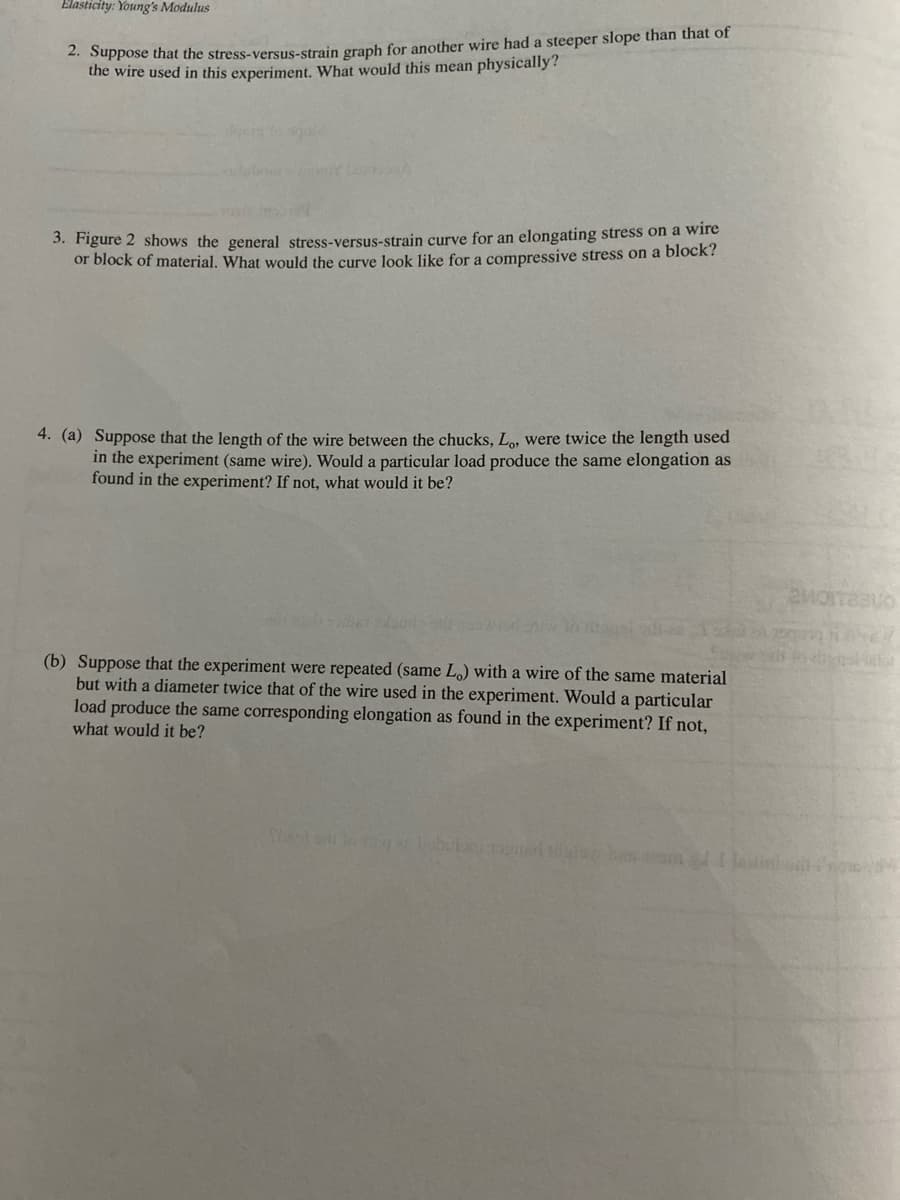. Suppose that the stress-versus-strain graph for another wire had a steeper slope than that of the wire used in this experiment. What would this mean physically?
. Suppose that the stress-versus-strain graph for another wire had a steeper slope than that of the wire used in this experiment. What would this mean physically?
Astronomy
1st Edition
ISBN:9781938168284
Author:Andrew Fraknoi; David Morrison; Sidney C. Wolff
Publisher:Andrew Fraknoi; David Morrison; Sidney C. Wolff
Chapter16: The Sun: A Nuclear Powerhouse
Section: Chapter Questions
Problem 19E: Earth’s atmosphere is in hydrostatic equilibrium. What this means is that the pressure at any point...
Related questions
Question

Transcribed Image Text:Elasticity: Young's Modulus
2. Suppose that the stress-versus-strain graph for another wire had a steeper slope than that of
the wire used in this experiment. What would this mean physically?
3. Figure 2 shows the general stress-versus-strain curve for an elongating stress on a wire
or block of material. What would the curve look like for a compressive stress on a block?
4. (a) Suppose that the length of the wire between the chucks, Lo, were twice the length used
load produce the same elongation as
in the experiment (same wire). Would a
found in the experiment? If not, what would it be?
(b) Suppose that the experiment were repeated (same L) with a wire of the same material
but with a diameter twice that of the wire used in the experiment. Would a particular
load produce the same corresponding elongation as found in the experiment? If not,
what would it be?
t alo g bu id lalin
Expert Solution
This question has been solved!
Explore an expertly crafted, step-by-step solution for a thorough understanding of key concepts.
This is a popular solution!
Trending now
This is a popular solution!
Step by step
Solved in 3 steps with 2 images

Knowledge Booster
Learn more about
Need a deep-dive on the concept behind this application? Look no further. Learn more about this topic, physics and related others by exploring similar questions and additional content below.Recommended textbooks for you

Astronomy
Physics
ISBN:
9781938168284
Author:
Andrew Fraknoi; David Morrison; Sidney C. Wolff
Publisher:
OpenStax

College Physics
Physics
ISBN:
9781285737027
Author:
Raymond A. Serway, Chris Vuille
Publisher:
Cengage Learning

College Physics
Physics
ISBN:
9781305952300
Author:
Raymond A. Serway, Chris Vuille
Publisher:
Cengage Learning

Astronomy
Physics
ISBN:
9781938168284
Author:
Andrew Fraknoi; David Morrison; Sidney C. Wolff
Publisher:
OpenStax

College Physics
Physics
ISBN:
9781285737027
Author:
Raymond A. Serway, Chris Vuille
Publisher:
Cengage Learning

College Physics
Physics
ISBN:
9781305952300
Author:
Raymond A. Serway, Chris Vuille
Publisher:
Cengage Learning

College Physics
Physics
ISBN:
9781938168000
Author:
Paul Peter Urone, Roger Hinrichs
Publisher:
OpenStax College

Glencoe Physics: Principles and Problems, Student…
Physics
ISBN:
9780078807213
Author:
Paul W. Zitzewitz
Publisher:
Glencoe/McGraw-Hill